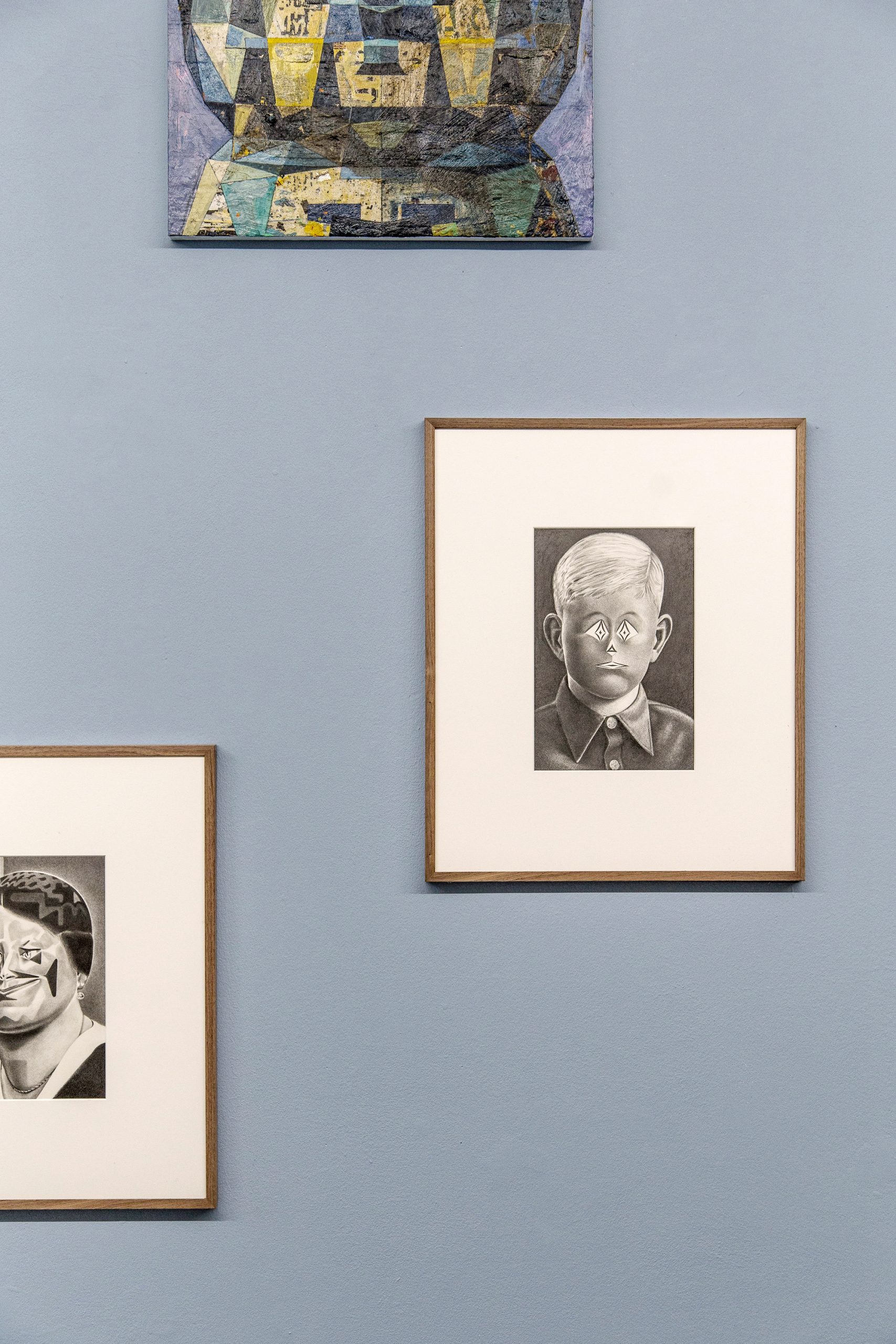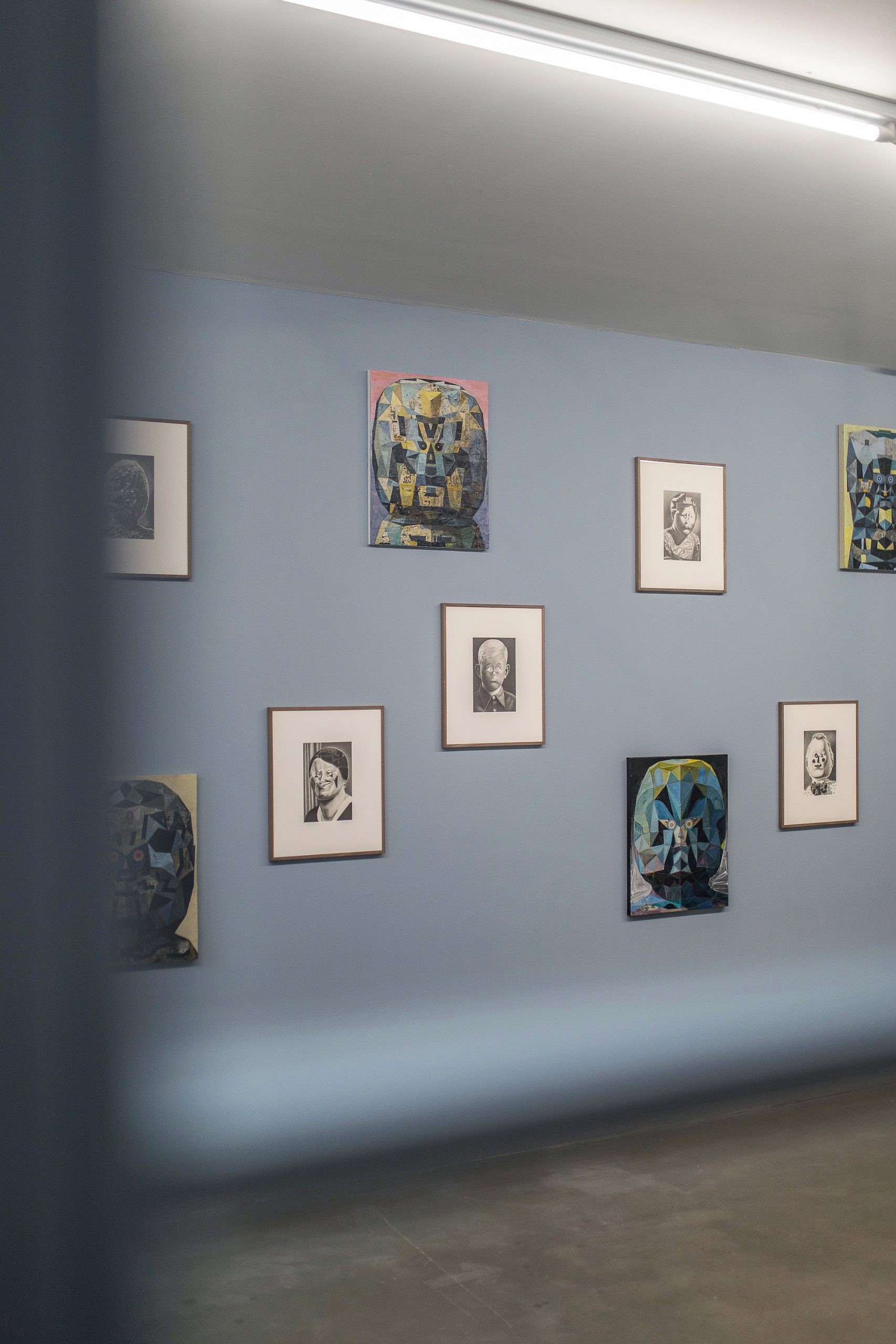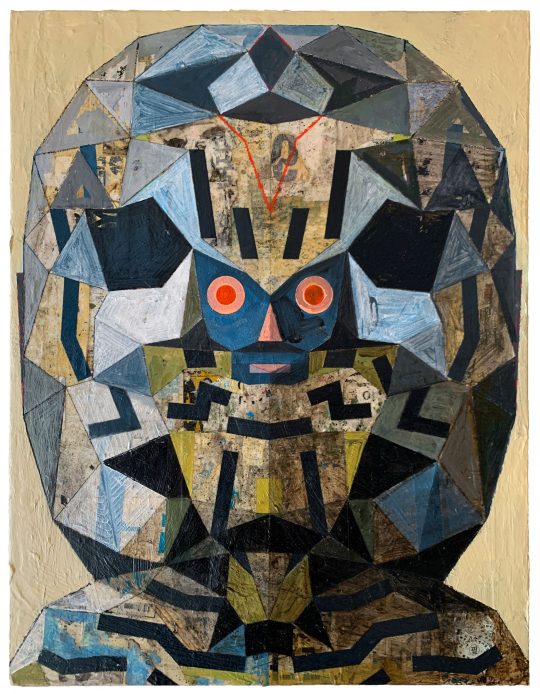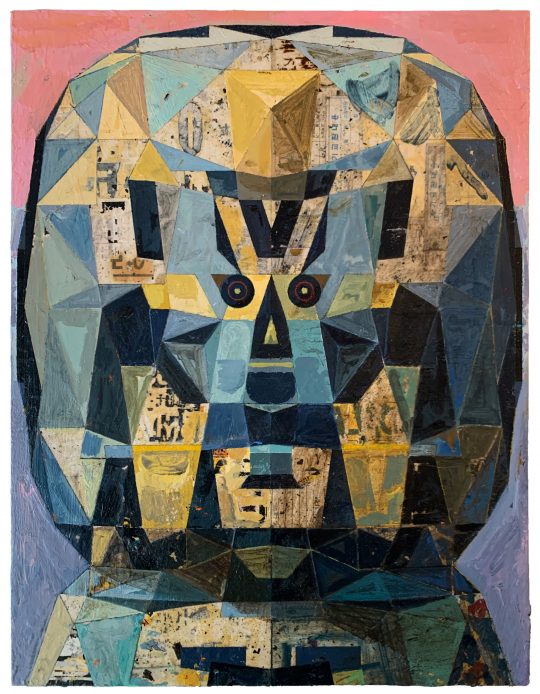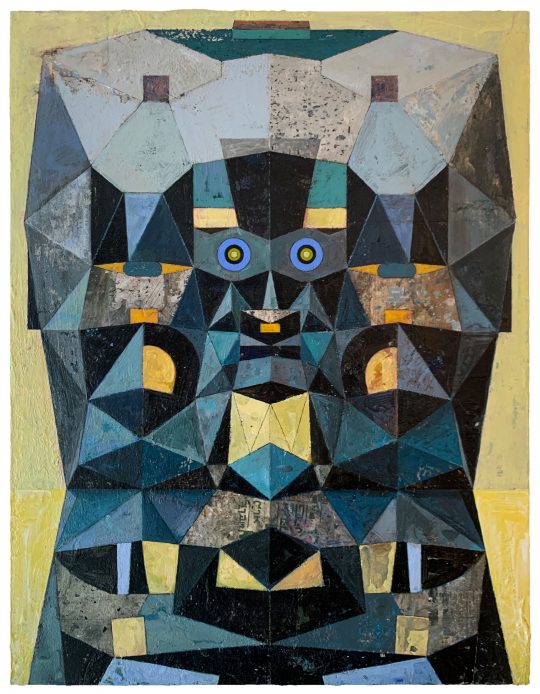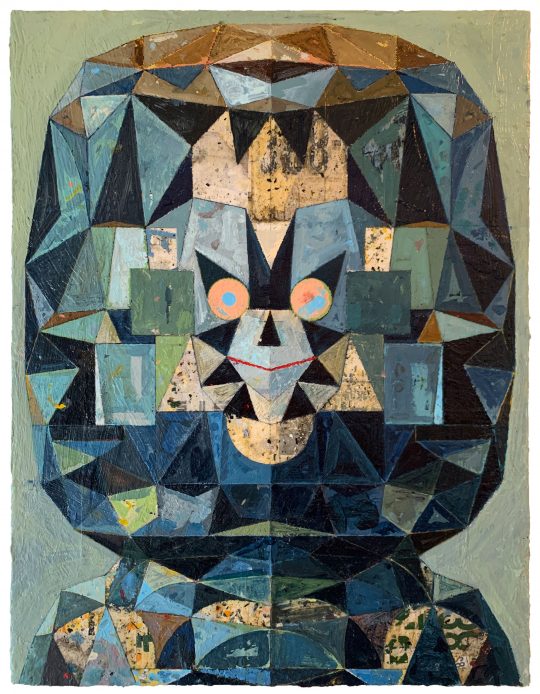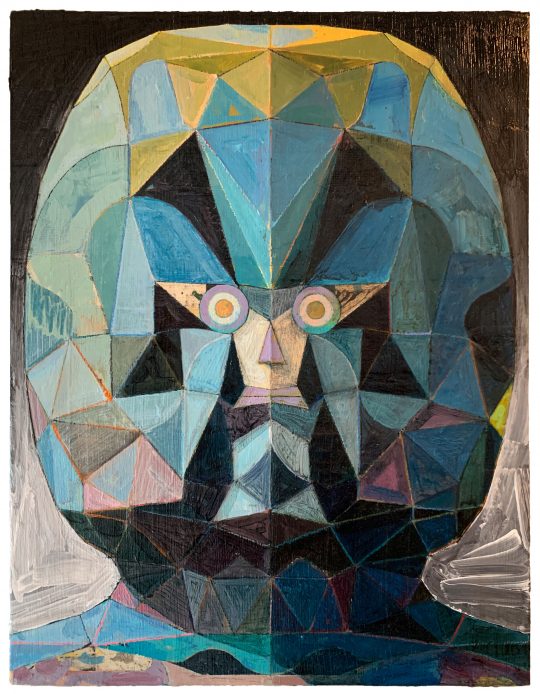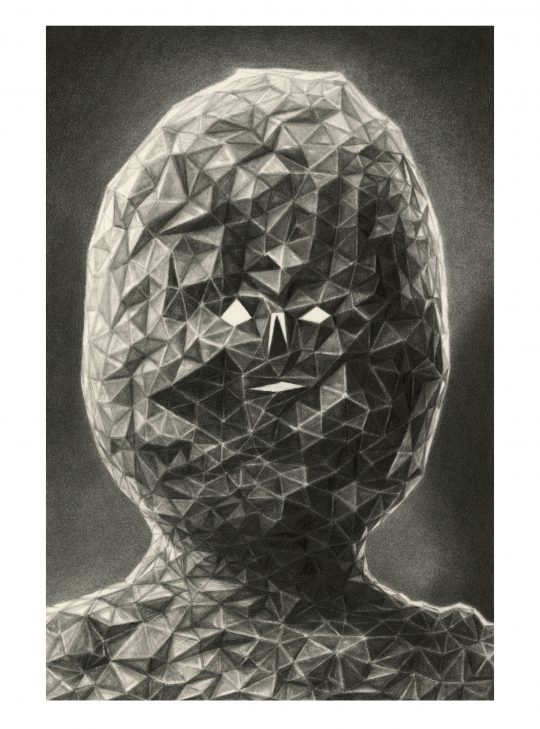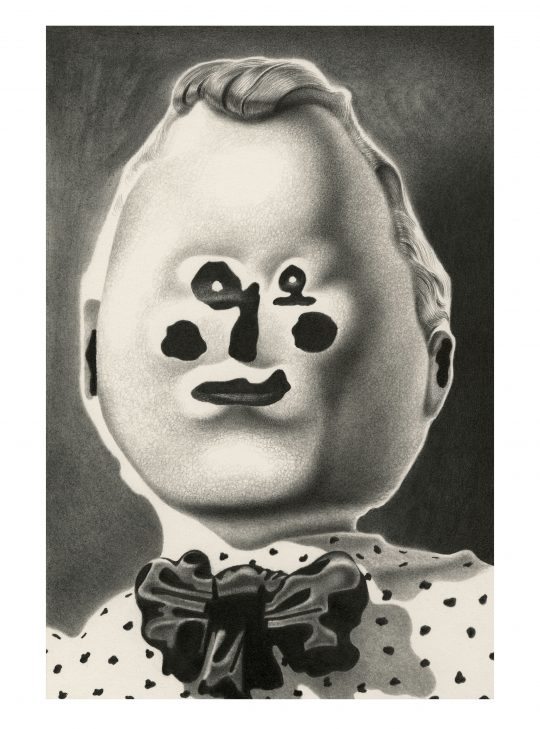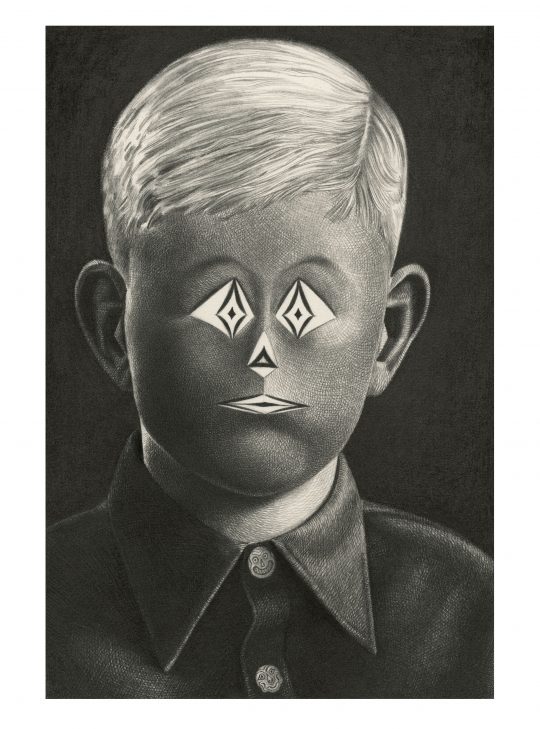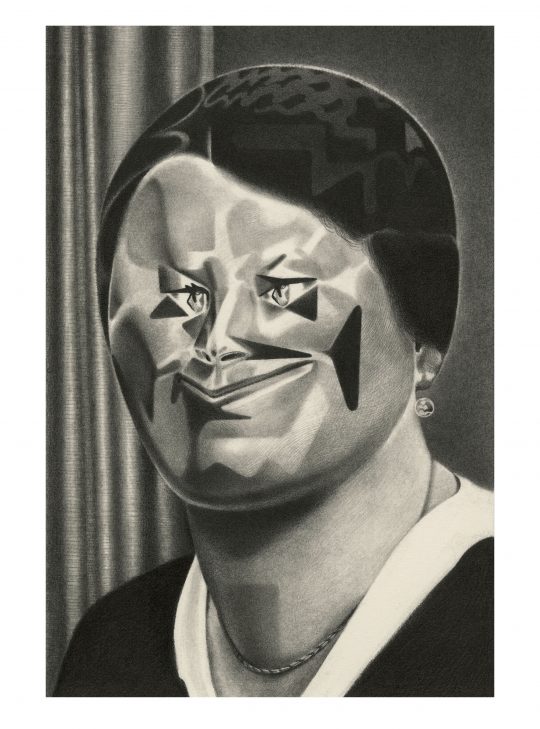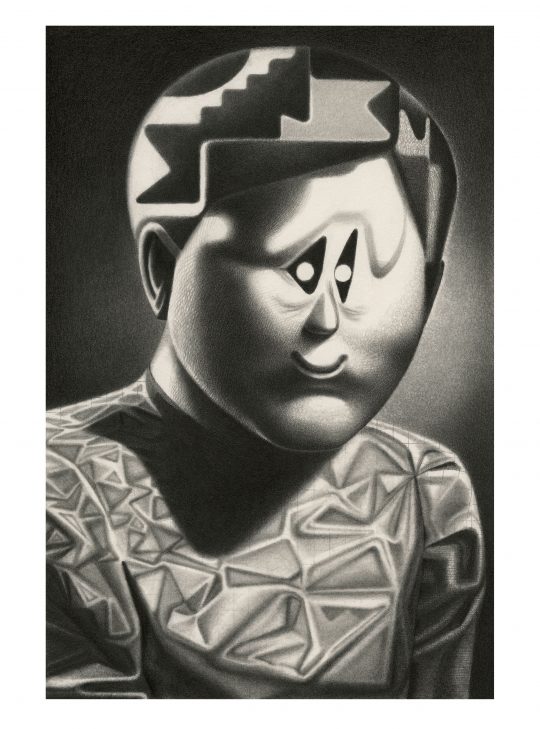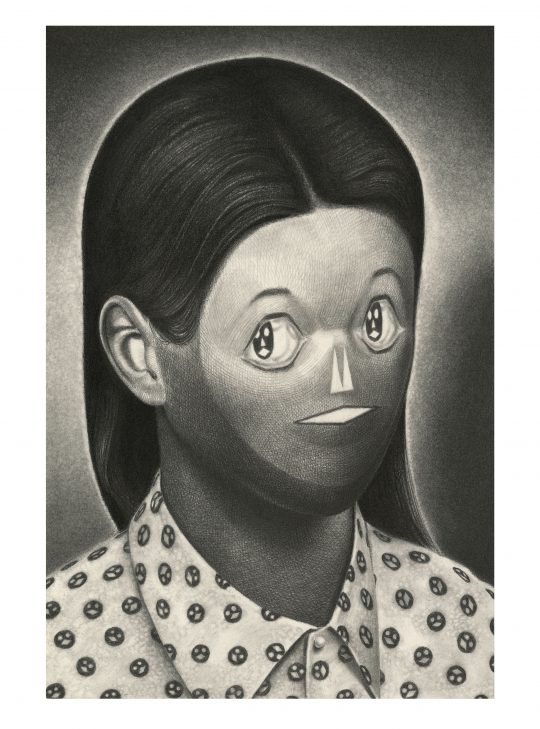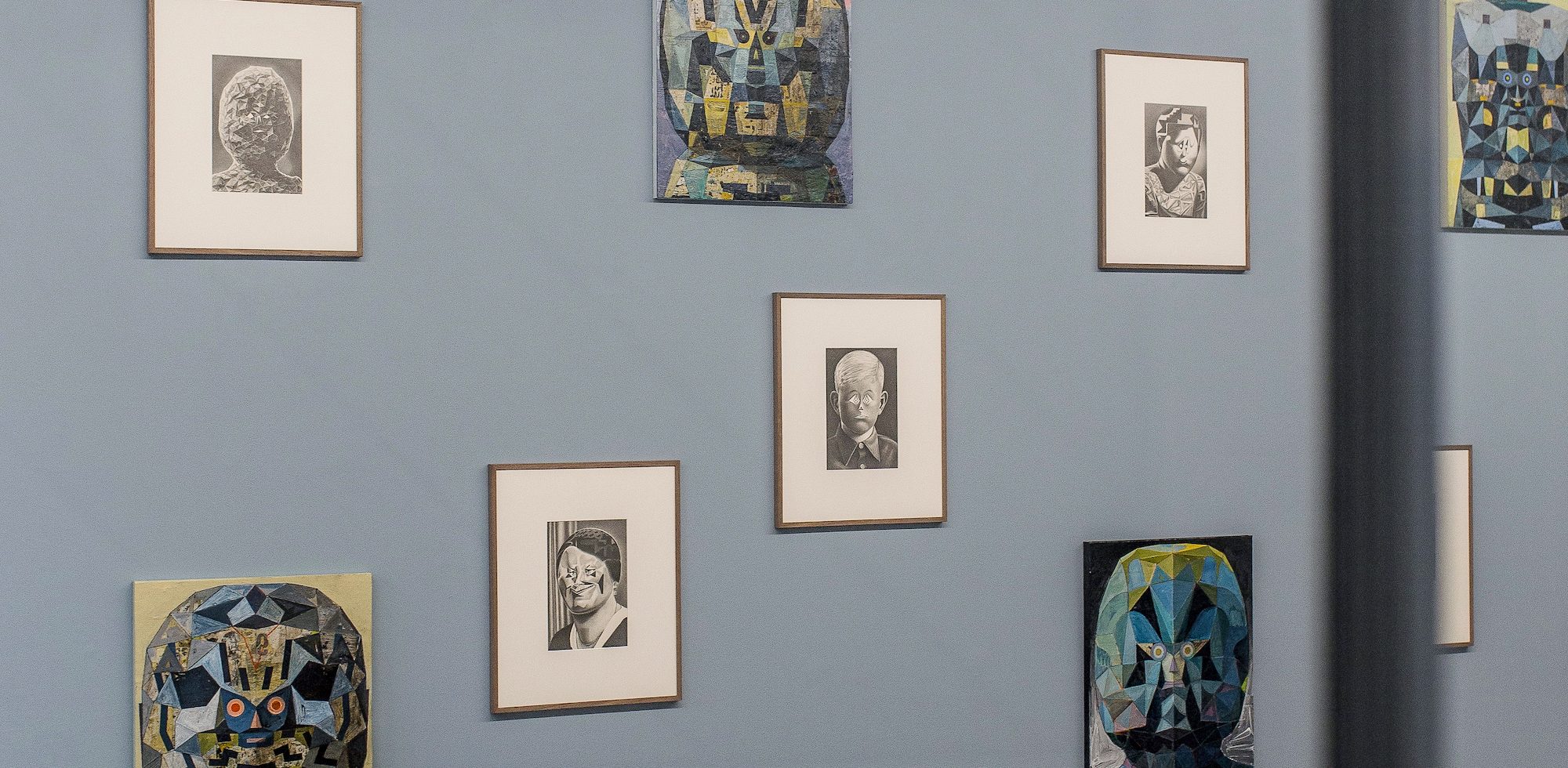
Contact
Contact
A solo exhibition by Raymond Lemstra
3-28 February 2022
Open by appointment only
Mini Galerie is proud to present the extraordinary work of Dutch artist Raymond Lemstra. Featuring two bodies of work, a series of six graphite drawings along with five paintings on thick collaged material, Lemstra employs a distinctive exploration of pareidolia: a psychological phenomenon in which the mind responds to a stimulus, usually visual, by perceiving a familiar pattern where none exists.
By using found black and white portrait photography as a starting point, a “spark” as Lemstra calls it, the artist explores a harmony between figuration and abstraction. In this process likeness becomes insignificant, and the focus is shifted to deconstructing the face. Formal shapes replace facial features, unimportant details are omitted, resulting in a new, perhaps even more captivating human presence.
Lemstra’s series of paintings observes exploration of figurative abstraction. Created on top of thick layers of collaged material, consisting of old stickers and pamphlets from the streets of Seoul, the artist constructs stylised characters in a rigid and harmonious geometric visual language. The positioning of abstract shapes and the use of strong symmetry trick our perception to see facial expressions, which together with Lemstra’s choice of colour omit a somewhat stoic mood. As a result, an energy is generated within the work’s geometry that leads to a recognition of the subjects as conscious beings.
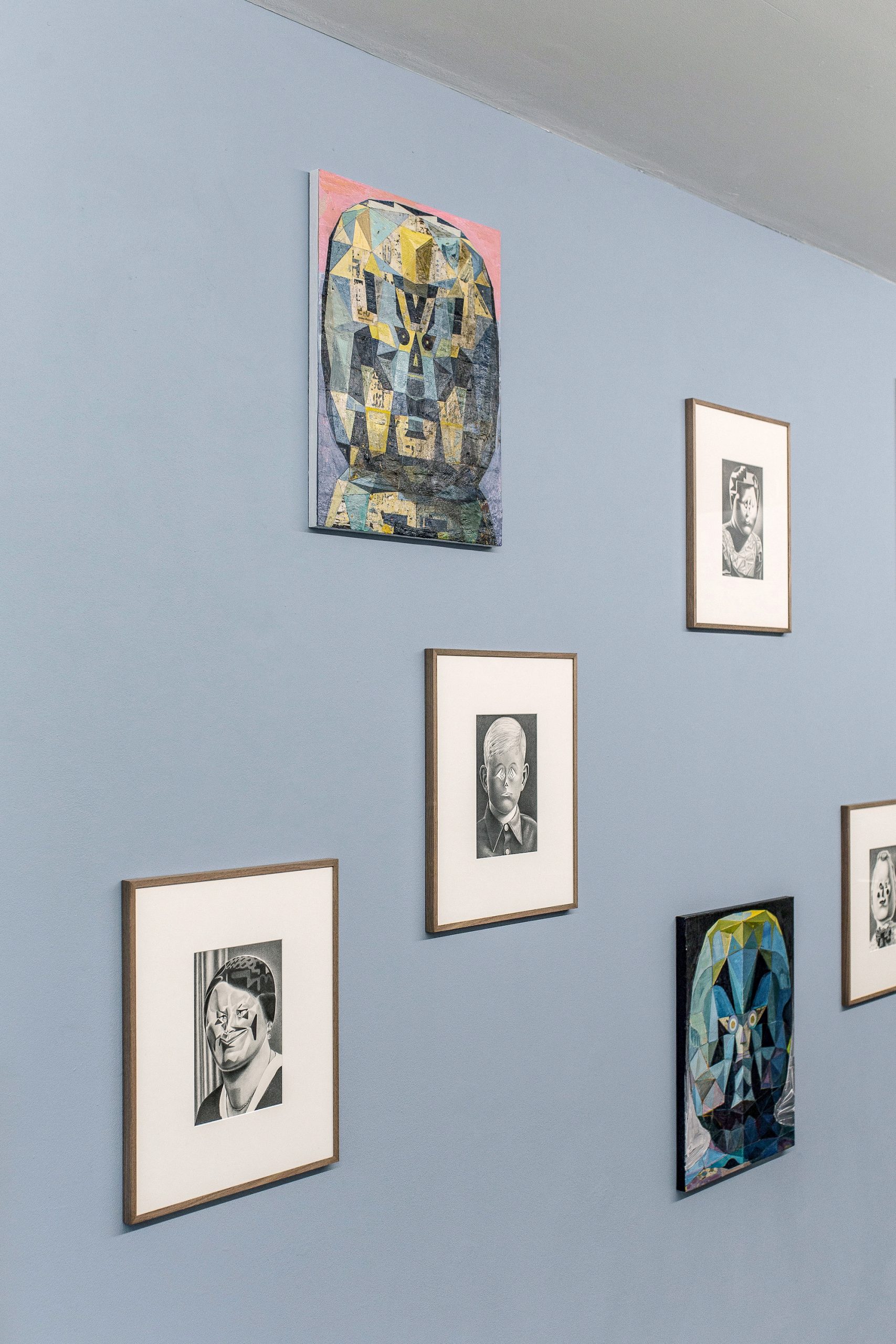
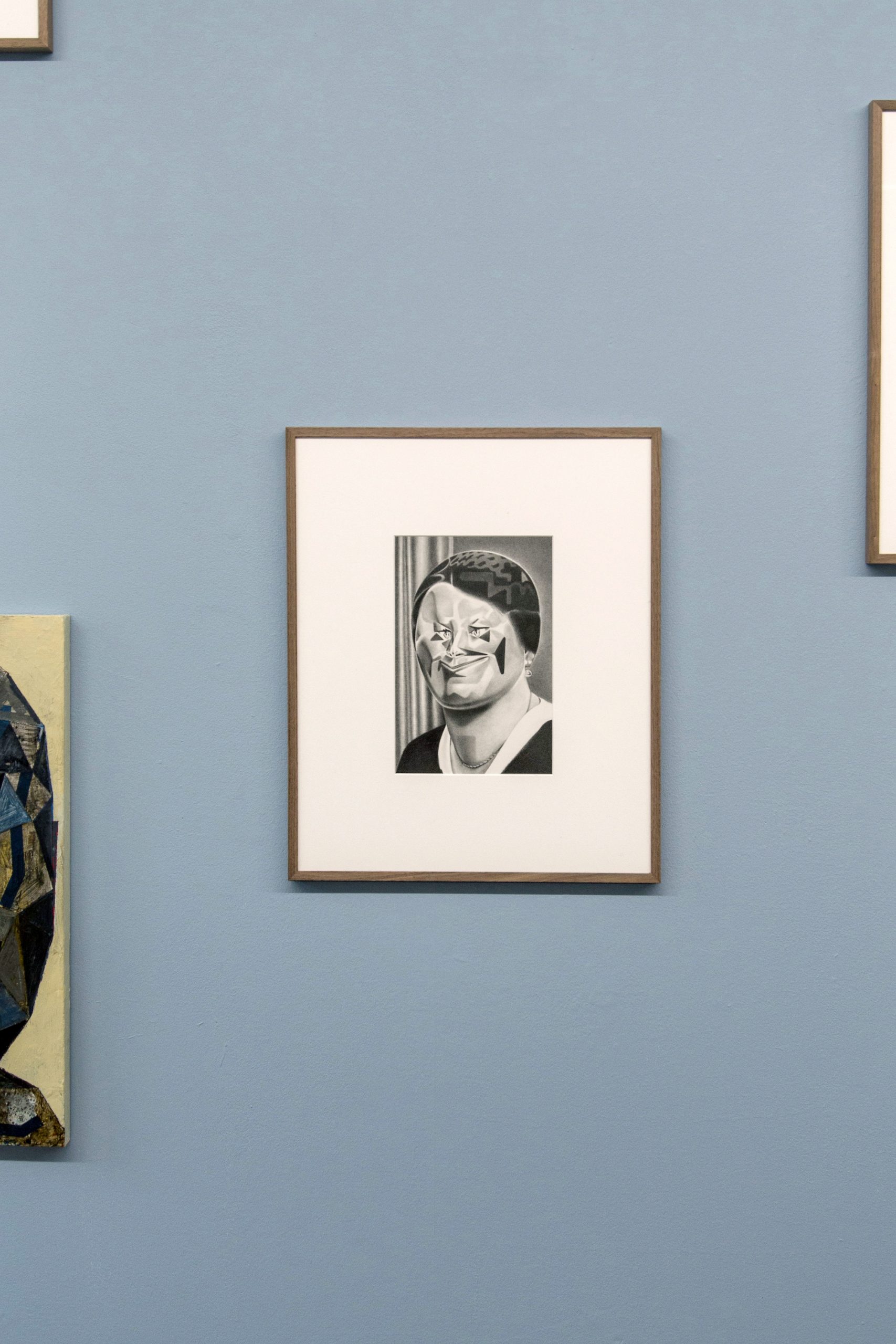
It’s 8am where I am in Austria, and 4pm in Seoul, where artist Raymond Lemstra chats to me from his home and studio. A year and a half into his immigration from the Netherlands to South Korea, Lemstra talks to me about his daily life, cultural observations, and an upcoming solo show with Mini Galerie.
Our call begins with Raymond professing fondness for the gigantic monstera growing behind me. He points to two plants nestled in the corner of his studio, where a few test prints of his drawings and several black and white photographs from the 30’s, 40’s and 50’s hang on the wall. Plants are symbolic of a calmer, more settled lifestyle. “I’ve been so used to living out of a suitcase for years, it really means a lot to finally have a calm place where we can care for plants, and have cats.” Lemstra lives with his partner, fellow artist Jang Koal, and their two cats in a house, full of plants, in the Korean capital.
“I first came here about seven and a half years ago, for a project called the Jaunt, where artists were sent to a location they’d never been to before and asked to create work based on their experience.”

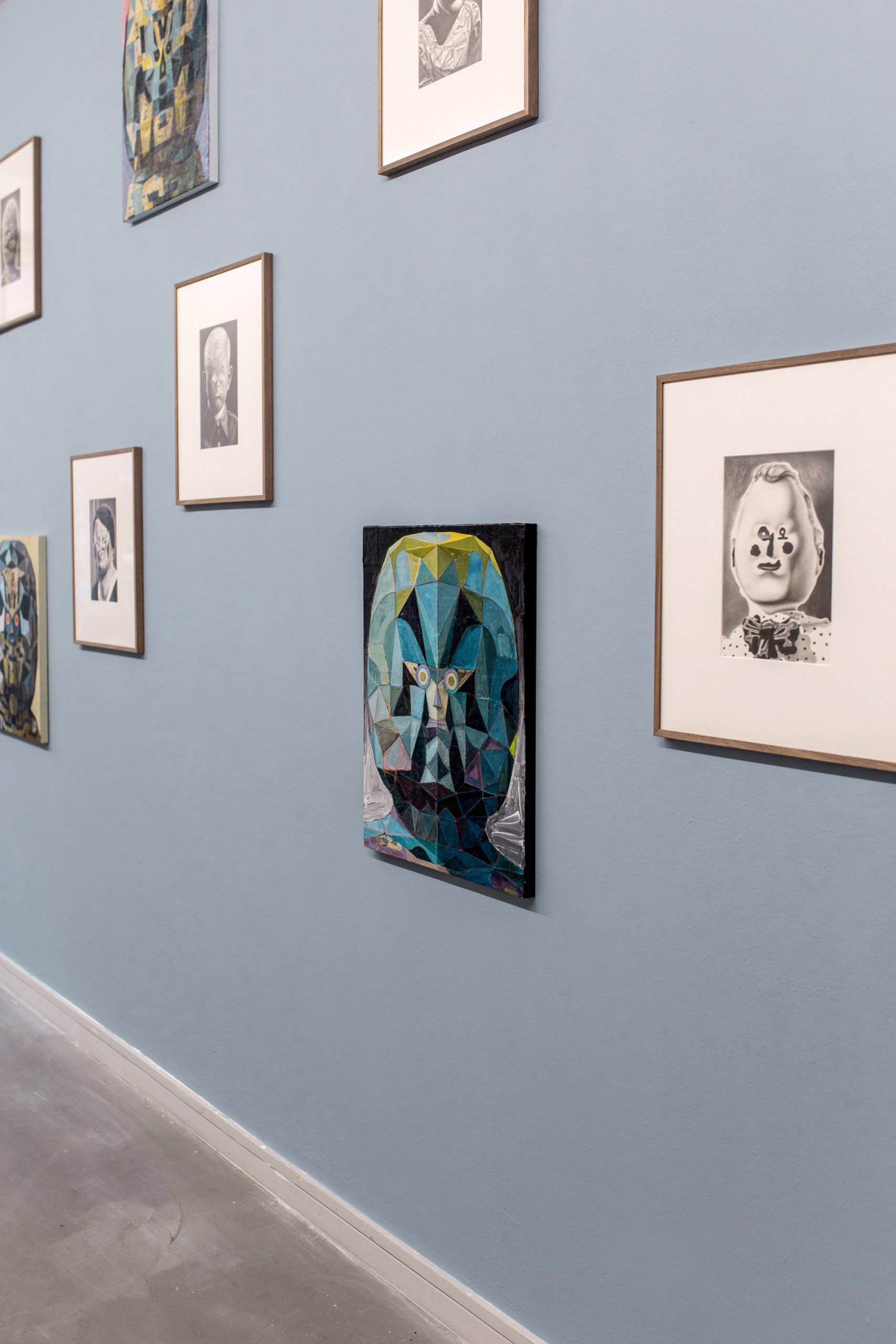
I ask him about the works for Mini Galerie’s show: a series of five paintings on a thick layer of collaged material and six drawings in graphite. The paintings are a continuation of his project “Facing Seoul”, created during his first long-term stay in Korea.
“I realized after some time that my practice was keeping me inside my studio. My drawings demanded a lot of time, and in those first months I started exploring painting in ways new to me. Both things were keeping me from connecting to my new surroundings, so I decided to make exploration of the city an essential part of my process. I’d noticed that Seoul’s surfaces were covered in old stickers and stuck-on pamphlets, slowly disintegrating after years of decaying in the harsh summer sunshine and the freezing cold Korean winters. I started peeling off this deteriorated ‘skin’ of the city and incorporated it into my work. This revealed a completely new layer of interaction with my surroundings – unexciting places that I might have avoided suddenly became goldmines. I collected materials from hundreds of small dark alleyways and lampposts, and with these I constructed the rough surfaces that served as the foundation of my paintings.”
“I regard these surfaces as collages of moments; while working in the studio I relive the city. Eventually, the memory of myself taking a fragment of the city at a specific place becomes subordinate to the long presence these remnants have had out in the world. The material’s state of deterioration has an unconventional beauty and invites us to imagine a long trail of memories and history – of the countless messages every generation leaves for each other throughout time.”

In Lemstra’s mask-like portraits, simple elements such as triangles, lines and circles instantly evoke recognition. Fictional personalities built from impersonal shapes make direct eye-contact, enforced by strong symmetry. These signs don’t need to resemble what they reference, but can symbolize them. This particular selective emphasis can be found in children’s drawings or pre-colonial masks. A triangle is a sign for a nose, a slit is a sign for a mouth. A sign that represents an eye can provoke a much more powerful reaction than an actual eye.
This playing with shapes stems from Lemstra’s fascination with pareidolia: a psychological phenomenon in which the mind responds to a stimulus, usually visual, by perceiving a familiar pattern where none exists. “I am fascinated by how this applies to facial recognition. In my work, I use the portrait as a starting point, then reduce it gradually and invite our facially obsessed perception to fill in the gaps.”
“It’s interesting how two dots placed parallel above a line, encased within a circle, can provoke an instantly more human reaction than a hyper realistic drawing of an actual face could.”

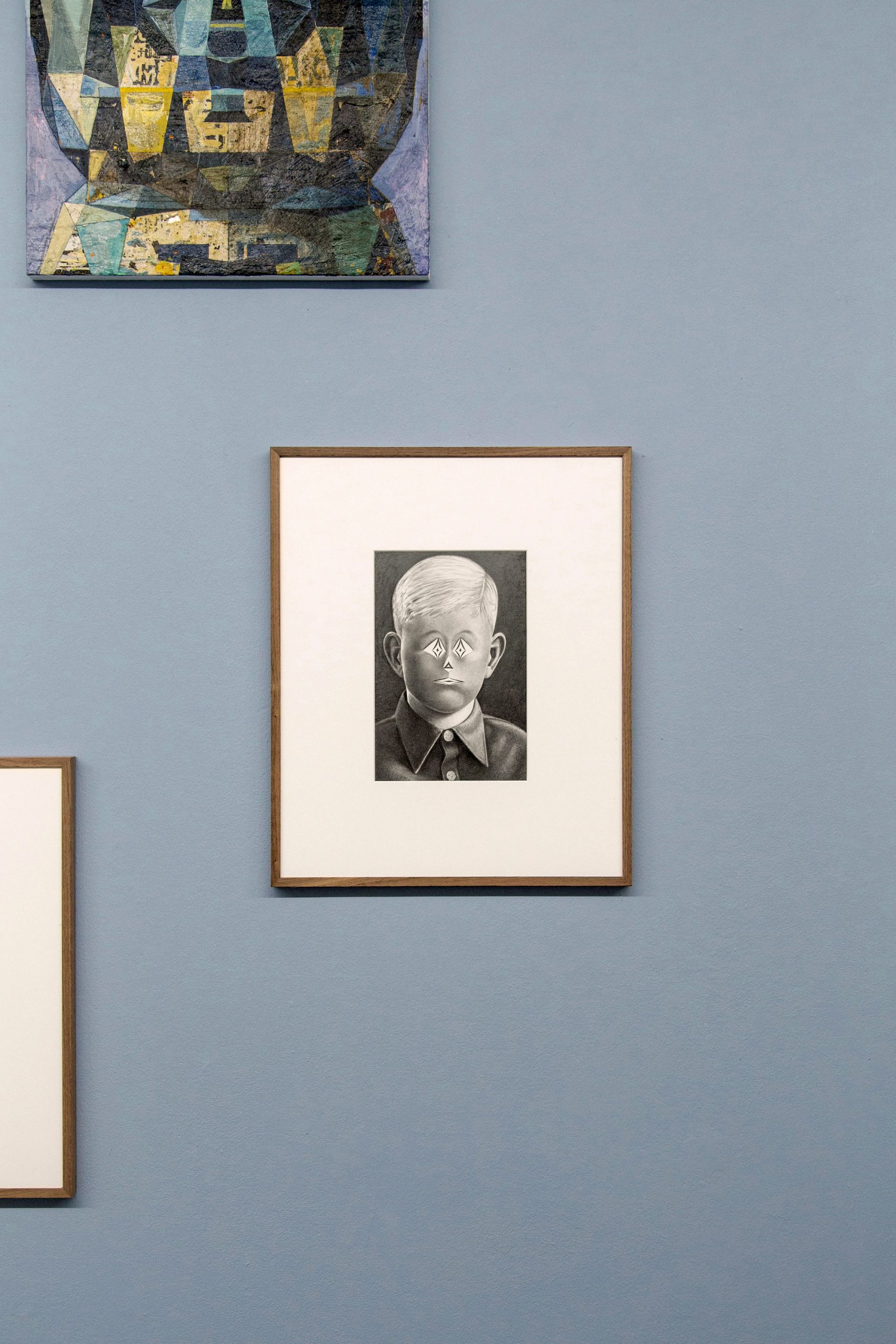
The portrait series began during Lemstra’s time in Paris, where he did an artist residency with Gana Art at the Cité International des Arts. While wandering through the French capital, the artist started collecting black and white portrait photography that spoke to him, becoming “sparks” that inspired his drawings. Rather than aim for likeness, these drawings merely function as an impulse to explore a specific harmony between figuration and abstraction. A prominent component in this playful investigation is observing the human urge to recognise life visually and construct surreal and uncanny relationships between the two disparate worlds.
I speak my mind: “Your work is quite unlike anything I’ve seen before. Usually I notice a certain trend within people’s artwork, especially with how easy it is to see and be influenced by other people’s work on instagram. Yours remains purely authentic, however.”
“Thanks for saying that. But I actually do look at a lot of art, and everything else for that matter. Visually there is no hierarchy in importance for me, but before I can truly engage with art I have to first be convinced by its sincerity. It has to be a heartfelt practice, an expression of what it means to be alive. In that sense any authenticity might stem from each individual’s unique experiences in life.”
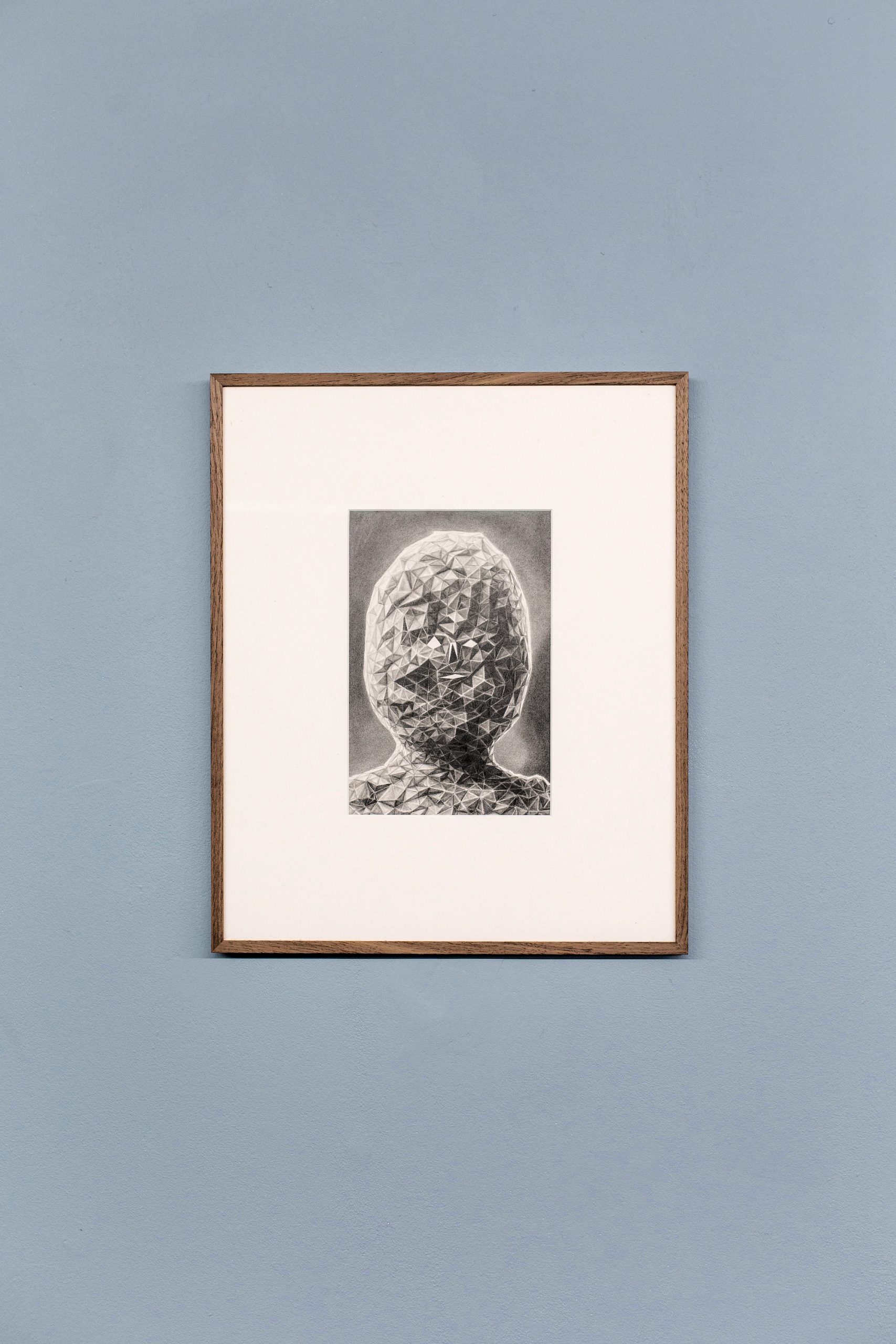
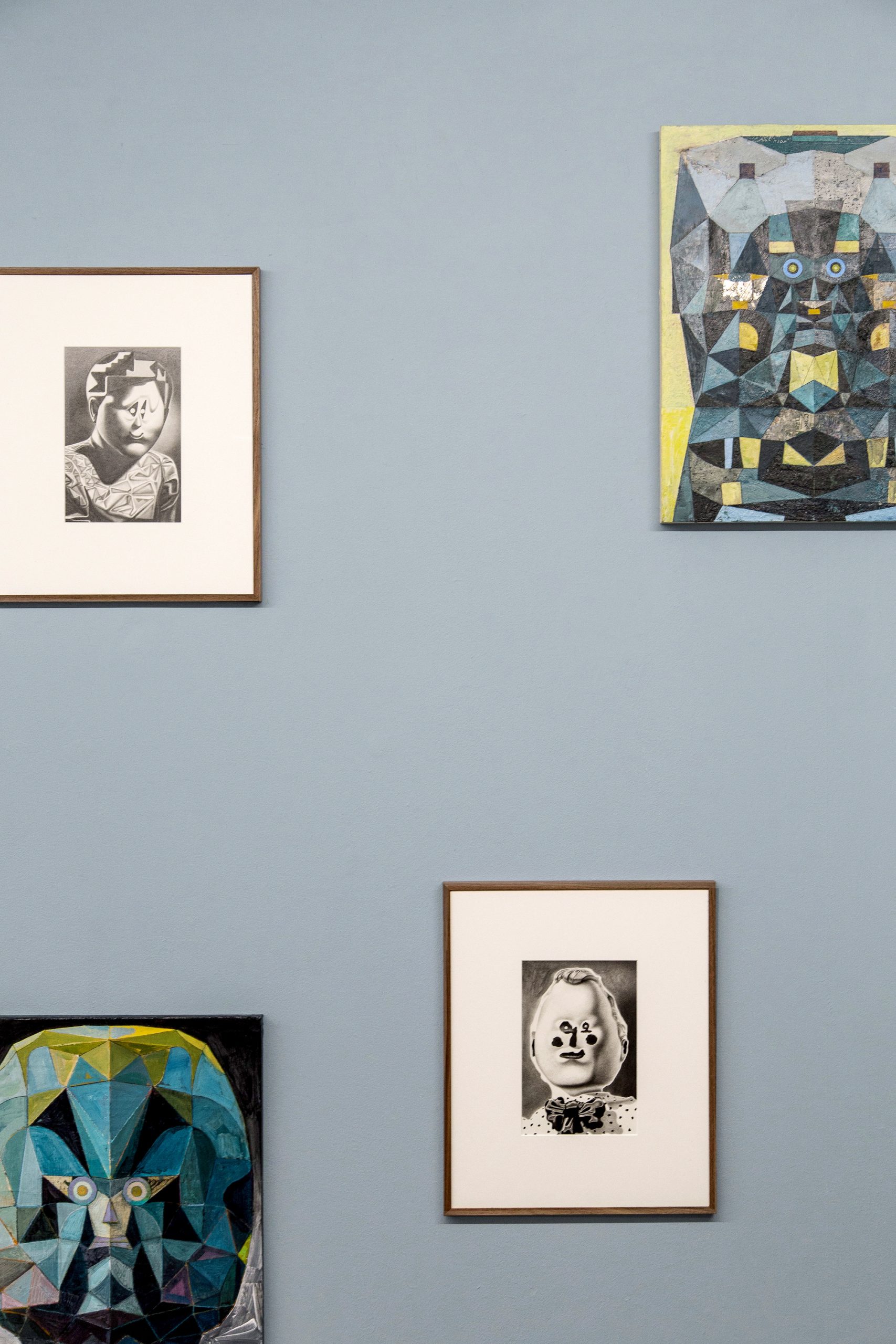
I ask him whether he has always felt like this, wanting to know more about his artistic background. “I was very young when I went to art school, Academie Minerva in Groningen. The prevailing idea at that time seemed that art should be either applied or deeply conceptual in nature. I mainly focused on illustration, but felt I didn’t belong with either conviction. Although I really had a great time, it left me unprepared for the reality that followed afterwards, and it took me some years to find my way back to where it initially all started – a deep love for drawing.”
I’m curious about the art scene in Korea and Lemstra’s place within it. “Since the first time I visited Seoul it has all changed on so many levels. There has been an explosive interest in contemporary art, and especially in the last couple of years the art market has been growing rapidly. Many local and international galleries spring up like mushrooms. It’s funny to see how this financial aspect is affecting, in good and bad ways, the art which is being created. But honestly there are so many factors at play that I can’t say anything sensible in just a few sentences.”
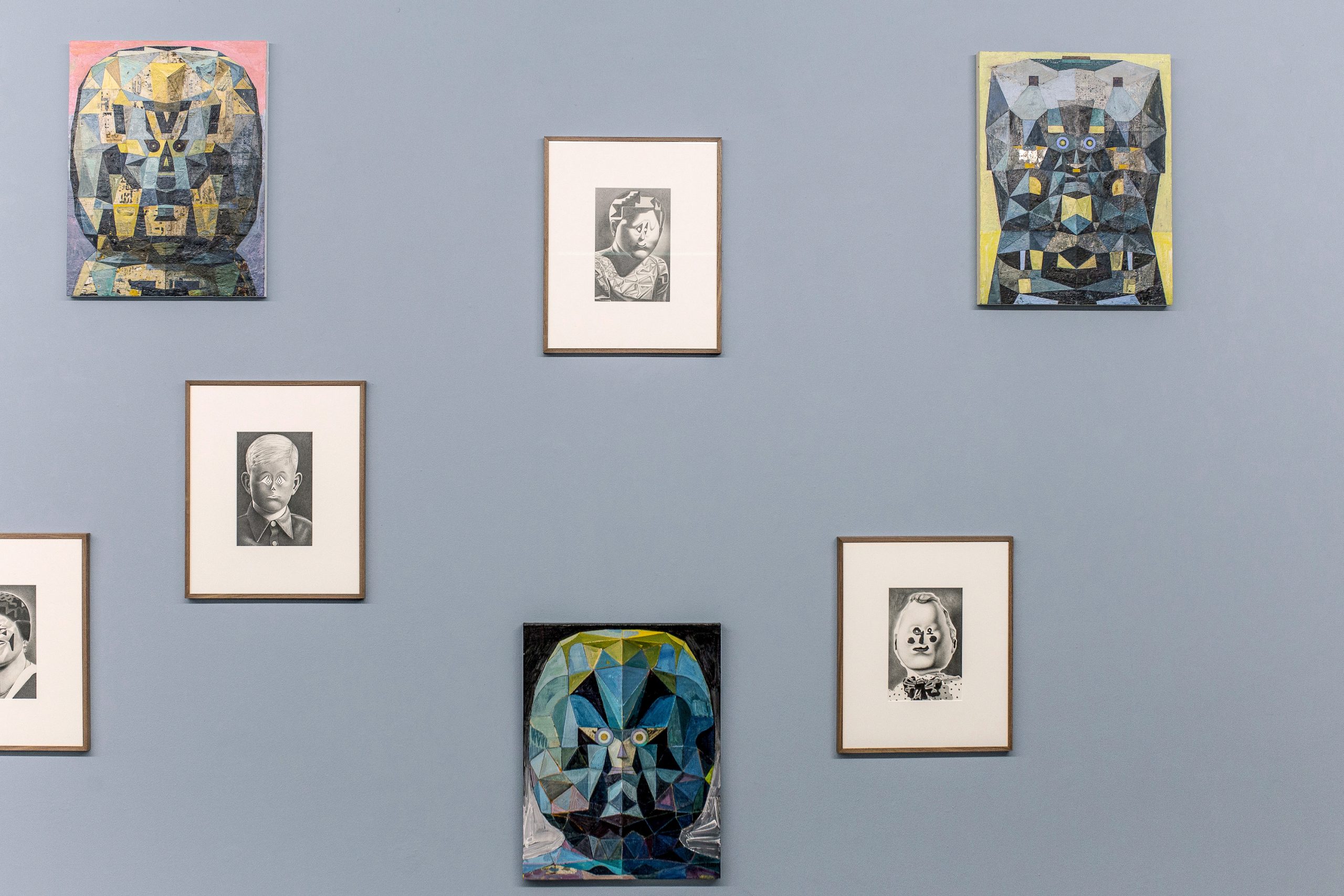
He tells me he is currently curating a show for Everyday Mooonday Gallery in Seoul.
“I wouldn’t call myself a curator, this is a first for me. The idea for this show came from the idea of showing the work of artists I deeply appreciate, and I was lucky enough to be able to collaborate with the gallery I have had the pleasure of working with for many years now.”
Lemstra sits sipping tea, and tells me he used to drink a lot of sencha, a Japanese green tea, but recently has been trying out all sorts of less caffeine-rich teas, which he has become increasingly enthusiastic about. It’s the morning for me, and I also have a cup next to me. It makes me think of rituals.
“Making tea and cutting up some fruit is the closest thing to having a ritual for me, and I listen to a lot of audiobooks. But I don’t really have a daily routine. I have tried many times, but it never works for me. I know rituals can be helpful for many people to get into a certain mindset to create. I usually just have to start. If I don’t feel like painting, then I draw. The same is true for the opposite; if I don’t get anywhere with a drawing, then I switch to painting.”
Text by Alicia Hanssen
Photography by Pierre Zylstra
